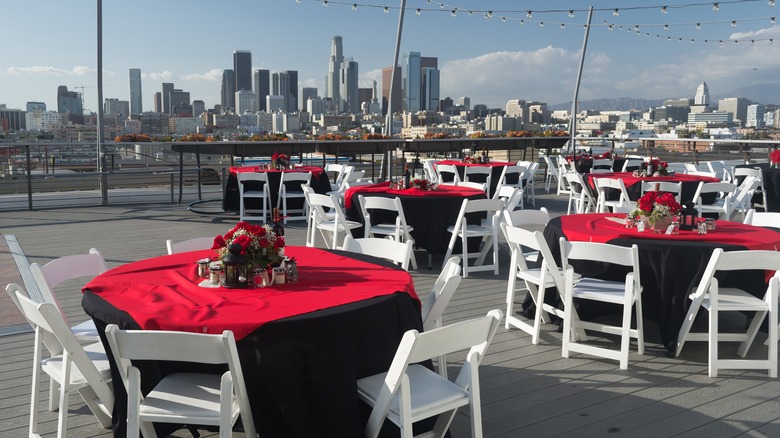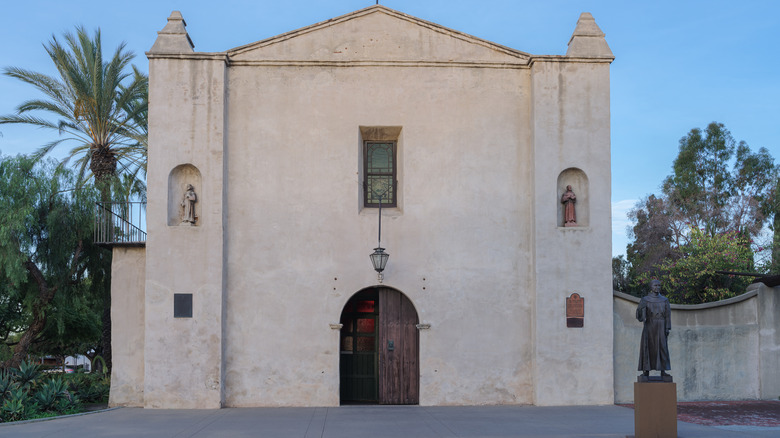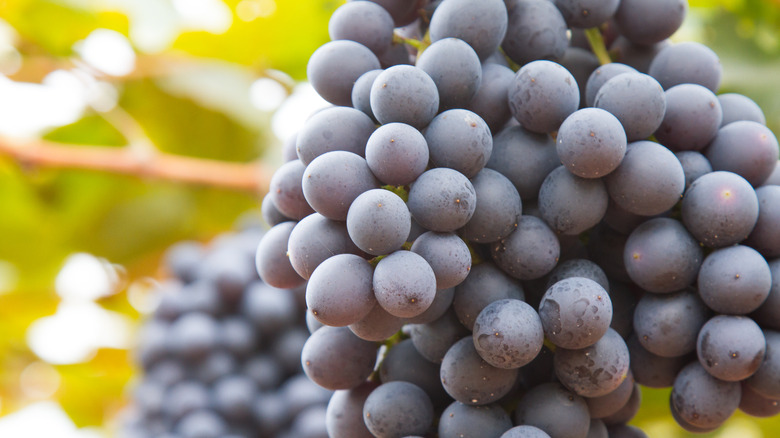How Los Angeles Majorly Influenced The American Wine Industry
Before the birth of California's wine country — even before the inception of the nation, the roots of the oldest American grapevine took hold in the sandy soil of Los Angeles's San Gabriel mission. Now apparently tree-sized, the Ramona vine is ground zero for California's wine industry. Before Los Angeles became a booming metropolis, it served as the largest vineyard in the country.
By the middle of the 19th century, Los Angeles was the biggest producer of wine in the U.S., popping out a whopping 25 million bottles annually. These Ramona vine grapes weren't just grown for wine production; they were used to make brandy and other spirits in a pre-prohibition world. Before it was known as the "City of Angels" it was called the "City of Vines" — and most people in living memory don't know a thing about it. Would it shock you to learn that the multi-billion dollar California wine industry sprang from the dark, colonial roots of the Catholic Church?
A dark history
The Ramona vine that sits in the courtyard of the San Gabriel mission in Los Angeles was more than likely planted by a clergyman. This is the mother of all California wine and was probably planted out of the mission's need for wine for communion. Unfortunately, the need for wine created a need for labor, and that requirement gave the Catholic Church a reason to exploit the local indigenous population. Native people were made responsible for cultivating and tending the mission's vines, so it's safe to say that California's wine industry was built on the backs of brutalized indigenous peoples.
Sadly, this is not overstatement. During the colonial mission era in California, many indigenous populations were kidnapped, assimilated, and held in horrendous conditions solely to provide free manual labor for the Catholic Church. They were barred from leaving the missions and were solely responsible for the production of wine for the mission. It's likely that the wine industry in California wouldn't exist at all if it were not for native people. This might be hard to think about, but it's essential to remember.
Ramona vine today
The Ramona vine has now been living in that courtyard for hundreds of years, tended to by mission caretakers, and she's thriving — surviving the centuries despite a botanical plague that wiped out the majority of Los Angeles' vines, as well as a fire that burned much of San Gabriel. The vine still produces fruit, and in 2020 a group of winemakers local to Los Angeles decided that they would harvest Ramona's grapes along with other California mission grapes and make a wine in an ancient style known as Angelica.
The grape varietals in the wine country of today are a far cry from the mission grapes of 19th-century California. Many of the state's commercial varietals are descended from French vines, like Sonoma's famous pinot noir or Paso Robles' Bordeaux. Sadly, there just aren't enough Ramona vines to produce a meaningful amount of fruit — so you're not going to see any Angelica-style wines from mission grapes at your local grocery anytime soon. But, the next time you uncork a bottle of California wine, remember where it came from.


